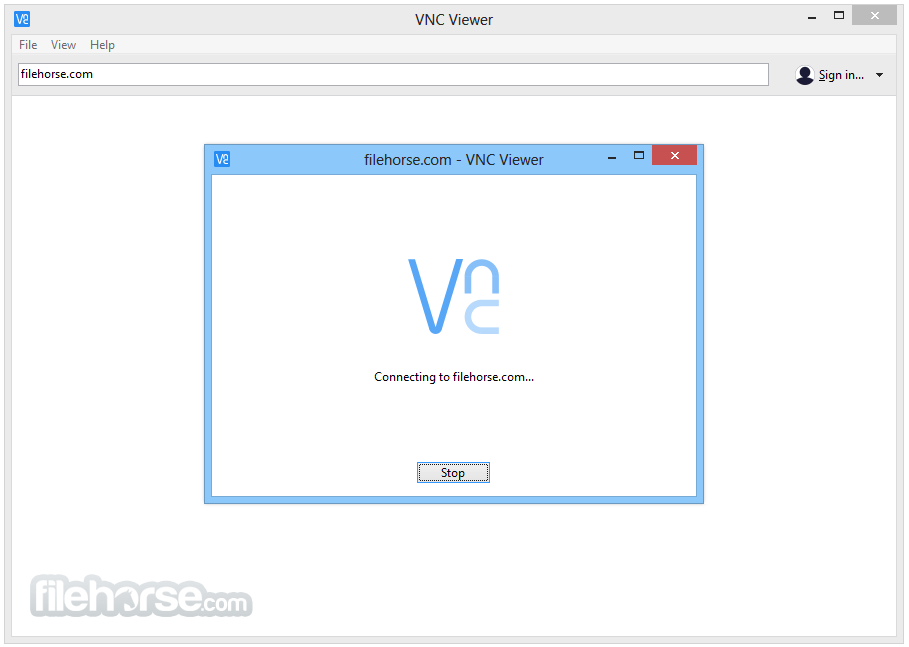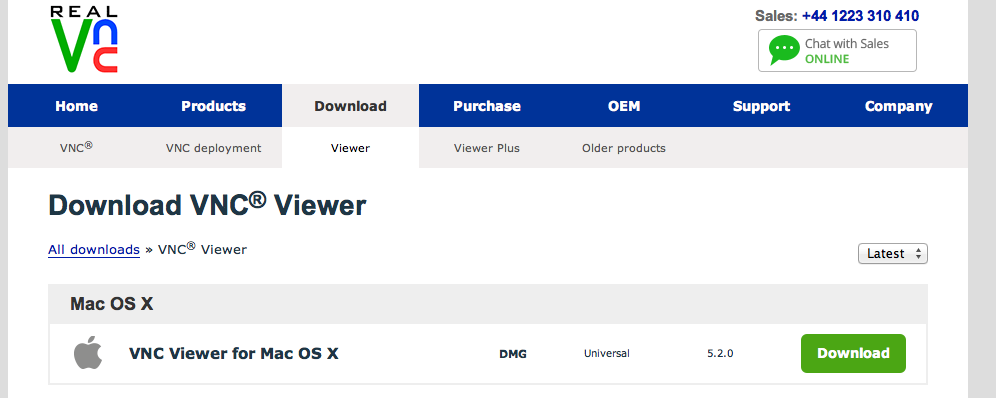

- #Vnc viewer for mac os 10.4 how to#
- #Vnc viewer for mac os 10.4 mac os x#
- #Vnc viewer for mac os 10.4 install#
- #Vnc viewer for mac os 10.4 manual#
When your computer has restarted fom the DVD, follow the installer until you reach 'Select destination.'.
#Vnc viewer for mac os 10.4 install#
Double-click the installer icon and press the 'Restart.' button when the installer asks you to (don't worry, it won't install OS X Server on your Mac after your Mac restarts).Ħ. Insert the 'Xserve Install DVD' into your client Mac, not in the Xserve.
#Vnc viewer for mac os 10.4 manual#
If you did what the manual said, the Xserve's internal harddisk, 'Server HD', should be visible on your desktop.ĥ. If your client Mac is not on, start it up and login. How-to is described on page 63 in the Xserve G5 User's Guide.Ĥ. I used the 400 port at the front of the Xserve because that matches the 400 port on my Powerbook.ģ. Connect the firewire cable to the Xserve and to your Mac. You are going to reinstall OS X anyway.Ģ. If that does not work, just press and hold the Xserve's power button until the machine switches off. Turn the Xserve off by starting '/Applications/Server/ ' on your Mac and clicking the 'Shutdown.' button. A VNC client: Chicken of the VNC from SourceForge.ġ.Ear protectors against the Xserve's fan/hd noise, when in target-disk mode.A firewire cable that is long enough to connect the Xserve and your Mac.A second Apple Mac running OS X 10.4, capable of reading DVD's.An Apple Xserve which will not let you configure it properly.Since I do not want to spend 299 (€ / $) on Apple's Remote Desktop client (which is not a part of the Xserve deal - buh!) and I did not want to invest in a PCI-X video card (which is also not a part of the Xserve deal - a second buh!), the only way was option 3: target-disk mode.
#Vnc viewer for mac os 10.4 how to#
Maybe the server waited for input? But hey, there's no video card in it? So what else could I do but break off the process and dive into the manuals again to find out how to reinstall the system software and in such a way that I can control it visually. It was obvious that something was going wrong, but I could nowhere see what it was or what it could be. In Server Assistant, I just followed the instructions.Īfter the last configuration screen, it dropped a shaded window saying my Xserve was being configured.

It turned out to be mine and I went on with the setup. The Xserve must have found a DHCP server somewhere on the other side of the ADSL router. It found the Xserve, waiting to be configured, at some weird IP-address. I waited a little and then started '/Applications/Server/ ' on my Powerbook.

Luckily it's going to my ISP's computer room. I pressed the power button of the Xserve and man. Nowhere a 'do-not-think-just-follow-these-steps' manual to get you started. Well, I read them 3 times and still didn't know where to start. I connected the power cable and put an ethernet cable in socket 1 at the back of the Xserve and installed the Server Admin tools on my Powerbook, which would be used as the administrative client machine to setup the Xserve.īut before pressing power buttons, I thought it would be good to read the manuals that came with the Xserve. I unpacked the machine and put it on top of its own carton box because I have no room on my desks for such a large machine. Least significant byte first in each pixel.The next day a very heavy, large black box was delivered. Throughput 4208 kbit/s - changing from 8bit True colour: max red 7 green 7 blue 3, shift red 0 green 3 blue 6 Using default colormap and visual, TrueColor, depth 24. True colour: max red 255 green 255 blue 255, shift red 16 green 8 blue 0 Most significant byte first in each pixel. VNC server supports protocol version 3.889 (viewer 3.3)Ĭonnected to VNC server, using protocol version 3.3 VNC viewer version 3.3.7 - built 22:21:34Ĭopyright (C) 1994-2000 AT&T Laboratories Cambridge.
#Vnc viewer for mac os 10.4 mac os x#
The other bug with vncviewer, which does not affect xtightvncviewer, is that when connecting to a computer running the built-in VNC server in Mac OS X 10.4 (this can be enabled in the Apple Remote Desktop settings in the Sharing panel of the System Preferences) vncviewer quits with the following vncviewer 10.0.33.47 I was actually going to report this and another bug under package vncviewer, but for some reason the bug reporting system refuses to accept vncviewer as a package name. This bug also exists in the vncviewer program which appears to be installed by default. This leaves a significant portion of the display unusable, depending on the size difference between the display and the window. It is possible to scroll down or to the right however, it is then impossible to scroll back up or to the left. When connecting to a VNC server with a display larger than the VNC Viewer window, scroll bars appear to allow moving around the larger display. Current version as of 29-04-07 running on Feisty AMD64.


 0 kommentar(er)
0 kommentar(er)
